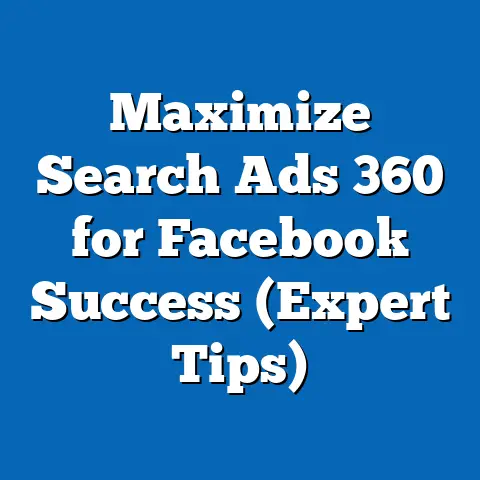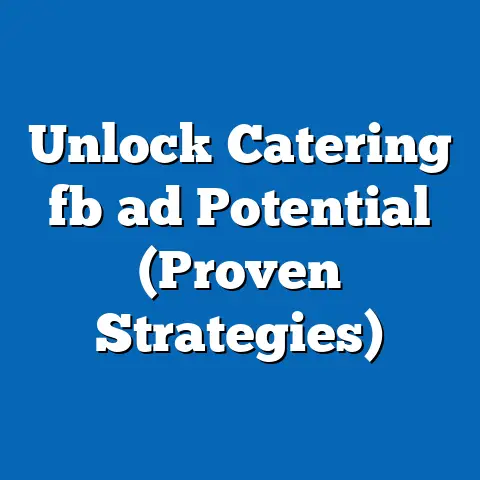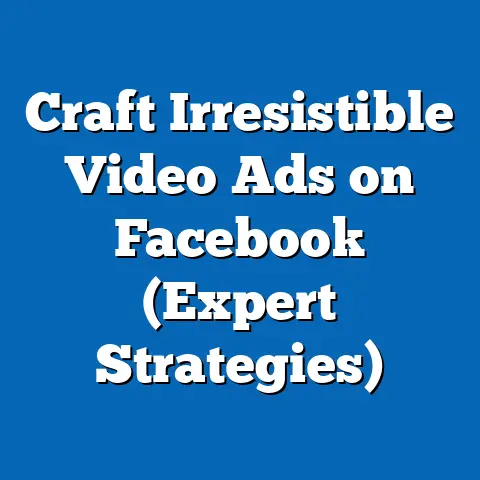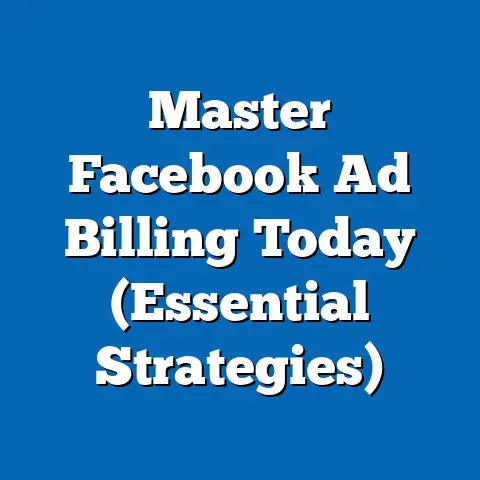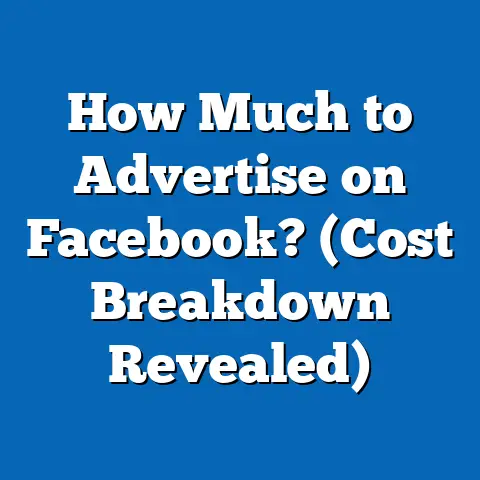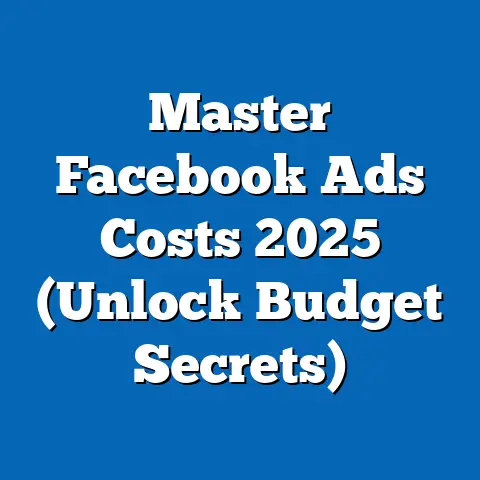Unlocking Area 51 Secrets (Insider fb ad Strategies)
Did you know that over 90% of Facebook advertisers fail to harness the full potential of their ad strategies, resulting in billions of dollars wasted annually? It’s a staggering figure, and it highlights a critical truth: successful Facebook advertising isn’t about simply throwing money at the platform. It’s about understanding the intricacies, the hidden levers, and the “insider” strategies that separate the winners from the also-rans. Just like Area 51, shrouded in mystery and rumored to hold secrets beyond our comprehension, Facebook advertising possesses its own set of hidden knowledge.
In this article, I’m going to take you behind the velvet rope, past the “restricted area” signs, and into the heart of what truly makes a Facebook ad campaign soar. We’ll explore advanced targeting techniques that go beyond the basics, dissect the art of crafting compelling ad creative, master the science of optimization and analytics, and even examine real-world case studies where businesses have successfully unlocked the “secrets” to Facebook advertising success. Get ready to discover insider strategies that will transform your advertising efforts and achieve measurable results – no alien technology required!
The Mythos of Facebook Advertising
Just like the countless conspiracy theories surrounding Area 51, Facebook advertising is often misunderstood and subject to numerous myths. Many businesses approach it with a “set it and forget it” mentality, believing that simply creating an ad and setting a budget will automatically lead to a flood of new customers. Unfortunately, this approach rarely yields the desired results.
I’ve seen it time and time again. Businesses launch campaigns with poorly defined target audiences, generic ad copy, and a lack of ongoing optimization. They’re essentially flying blind, hoping to stumble upon success. The reality is that Facebook advertising, like any sophisticated marketing tool, requires a strategic approach, a deep understanding of the platform, and a willingness to constantly test and refine your strategy.
Think of it this way: Area 51 isn’t just a patch of desert; it’s a complex facility with layers of security, specialized personnel, and cutting-edge technology. Similarly, Facebook advertising isn’t just about creating an ad; it’s about understanding the algorithms, leveraging the targeting options, and crafting a compelling message that resonates with your audience.
Takeaway: Don’t fall for the myth that Facebook advertising is a simple “set it and forget it” solution. It requires a strategic approach, ongoing optimization, and a willingness to learn and adapt.
The Science of Targeting
One of the most powerful aspects of Facebook advertising is its unparalleled targeting capabilities. It allows you to reach incredibly specific audiences based on demographics, interests, behaviors, and more. But to truly unlock the potential of Facebook targeting, you need to go beyond the basics and delve into the science of audience segmentation.
Imagine trying to find evidence of extraterrestrial life at Area 51 without knowing where to look. You’d be wandering aimlessly in the dark. Similarly, targeting a broad, undefined audience on Facebook is like throwing darts blindfolded. You might get lucky, but you’re far more likely to miss the mark.
Here’s where the “insider” strategies come into play:
- Custom Audiences: These allow you to upload your own customer data (email addresses, phone numbers, etc.) to create highly targeted audiences. This is incredibly powerful for retargeting existing customers, creating lookalike audiences, or targeting specific segments of your customer base. I once worked with a client who ran an e-commerce store selling high-end coffee. By uploading their customer list and creating a custom audience, they were able to target their existing customers with personalized ads promoting new roasts, resulting in a 30% increase in repeat purchases.
- Lookalike Audiences: This feature allows you to create new audiences that are similar to your existing customers or website visitors. Facebook analyzes the characteristics of your source audience and identifies users who share similar traits. This is a fantastic way to expand your reach and find new customers who are likely to be interested in your products or services. I’ve found that lookalike audiences based on high-value customers consistently outperform other targeting options.
- Detailed Targeting: This is where you can really get granular with your targeting. You can target users based on their demographics (age, gender, location), interests (hobbies, passions, favorite brands), behaviors (purchase history, online activity), and more. The key is to think critically about your ideal customer and identify the specific characteristics that define them. For example, if you’re selling running shoes, you might target users who are interested in running, fitness, and specific running shoe brands.
I had a client who sold organic baby food. Initially, they were targeting a broad audience of parents with young children. However, by refining their targeting to focus on parents who were interested in organic food, natural parenting, and specific organic baby food brands, they saw a dramatic improvement in their ad performance. Their click-through rate increased by 50%, and their conversion rate doubled.
The key to successful Facebook targeting is to be specific, strategic, and data-driven. Don’t just guess at your target audience; research your ideal customer, analyze your existing customer data, and constantly test different targeting options to see what works best. Just like the scientists at Area 51, you need to be meticulous in your research and analysis to uncover the “truths” about your audience.
Takeaway: Master the science of targeting by leveraging Custom Audiences, Lookalike Audiences, and detailed targeting options. Be specific, strategic, and data-driven in your approach.
Crafting the Perfect Ad
Targeting is only half the battle. Once you’ve identified your ideal audience, you need to create an ad that captures their attention and compels them to take action. This is where the art of ad creation comes into play.
Think of your ad as a message from Area 51. It needs to be intriguing, captivating, and relevant to the recipient. If it’s boring, generic, or irrelevant, it will be ignored.
Here are some key elements of high-performing Facebook ads:
- Visuals: Your ad’s visual is the first thing people will see, so it needs to be eye-catching and relevant to your message. Use high-quality images or videos that are visually appealing and tell a story. I’ve found that videos tend to perform particularly well on Facebook, especially short, engaging videos that capture attention quickly. One of my clients, a local brewery, created a short video showcasing their brewing process and the passion behind their craft. The video was incredibly effective in capturing the attention of local beer enthusiasts and driving traffic to their taproom.
- Copy: Your ad copy should be clear, concise, and compelling. Highlight the benefits of your product or service and explain why people should care. Use strong verbs and persuasive language to encourage action. I always recommend focusing on the “what’s in it for me” aspect for the customer.
- Call to Action (CTA): Your ad should have a clear call to action that tells people what you want them to do. Use action-oriented phrases like “Shop Now,” “Learn More,” “Sign Up,” or “Get Started.” Make sure your CTA is prominent and easy to click.
- Relevance: Your ad needs to be relevant to your target audience. If your ad is irrelevant, people will ignore it, no matter how visually appealing or well-written it is. This is why it’s so important to understand your audience and tailor your message to their specific needs and interests.
A/B testing is crucial for optimizing your ad creative. Try testing different headlines, images, and calls to action to see what resonates most with your audience. Facebook Ads Manager makes it easy to run A/B tests and track the performance of different ad variations.
I worked with a client who was struggling to get clicks on their Facebook ads. We decided to run an A/B test, testing two different headlines: “Get the Best Prices on Running Shoes” and “Run Faster, Run Further with Our Running Shoes.” The second headline, which focused on the benefits of the shoes rather than the price, significantly outperformed the first headline, resulting in a 40% increase in click-through rate.
The psychology behind effective ad design and messaging is fascinating. People are drawn to visuals that are emotionally engaging, that tell a story, or that offer a solution to a problem. They’re also more likely to respond to ads that are personalized and relevant to their interests.
Just like the allure and mystery of Area 51, your ad needs to capture people’s imagination and pique their curiosity. It needs to be something that they can’t ignore.
Takeaway: Craft compelling ads with eye-catching visuals, clear and concise copy, and a strong call to action. A/B test different ad variations to see what resonates most with your audience.
Optimization and Analytics
Creating a great ad is only the beginning. To truly maximize your Facebook advertising ROI, you need to continuously optimize your campaigns based on data and analytics.
Imagine trying to decipher classified documents from Area 51 without the proper tools or training. You’d be lost in a sea of jargon and cryptic symbols. Similarly, trying to optimize your Facebook ad campaigns without understanding the data is like navigating in the dark.
Facebook Ads Manager provides a wealth of data on your ad performance, including impressions, clicks, click-through rate, cost per click, conversions, and more. The key is to understand what these metrics mean and how to use them to make informed decisions.
Here are some key metrics to track:
- Click-Through Rate (CTR): This is the percentage of people who see your ad and click on it. A high CTR indicates that your ad is relevant and engaging to your target audience.
- Cost Per Click (CPC): This is the amount you pay each time someone clicks on your ad. A low CPC indicates that your ad is efficient and cost-effective.
- Conversion Rate: This is the percentage of people who click on your ad and complete a desired action, such as making a purchase, filling out a form, or signing up for a newsletter. A high conversion rate indicates that your ad is effective in driving results.
- Return on Ad Spend (ROAS): This is the amount of revenue you generate for every dollar you spend on advertising. A high ROAS indicates that your ad is profitable and generating a positive return on investment.
Conversion tracking is essential for understanding user behavior and improving ad effectiveness. By implementing the Facebook pixel on your website, you can track the actions that people take after clicking on your ad, such as adding items to their cart, completing a purchase, or filling out a form. This data can be used to optimize your campaigns and target users who are most likely to convert.
I worked with a client who was running a Facebook ad campaign to promote their online course. By implementing conversion tracking, we were able to identify that a significant portion of their website traffic was dropping off before completing the purchase. We then analyzed the checkout process and identified several areas for improvement, such as simplifying the form and offering more payment options. As a result, they saw a 20% increase in their conversion rate.
Ongoing optimization is crucial for maximizing your Facebook advertising ROI. Continuously monitor your ad performance, identify areas for improvement, and make adjustments to your targeting, creative, and bidding strategies.
Just like decoding classified documents from Area 51, analyzing your Facebook ad data requires a keen eye, a strategic mind, and a willingness to experiment.
Takeaway: Track key metrics like CTR, CPC, conversion rate, and ROAS. Implement conversion tracking to understand user behavior and improve ad effectiveness. Continuously optimize your campaigns based on data and analytics.
Real-World Case Studies
Let’s take a look at some real-world examples of businesses that have successfully implemented insider strategies to enhance their Facebook ad performance.
Case Study 1: Local Restaurant
A local restaurant was struggling to attract new customers through traditional advertising methods. They decided to try Facebook advertising, but initially, their results were underwhelming. They were targeting a broad audience of people who lived in the area, but their ads weren’t resonating.
After implementing some insider strategies, they saw a dramatic improvement in their ad performance. They started by creating a custom audience of their existing customers and then created a lookalike audience based on that. They also refined their targeting to focus on people who were interested in specific types of cuisine and who frequently dined out.
They then created a series of engaging ads that showcased their delicious food and highlighted their unique atmosphere. They also ran a contest on Facebook, offering a free dinner to one lucky winner.
As a result, they saw a significant increase in their website traffic, their online orders, and their in-restaurant reservations. Their Facebook ad campaign became their most effective marketing channel.
Case Study 2: E-commerce Store
An e-commerce store selling handmade jewelry was struggling to compete with larger retailers. They decided to try Facebook advertising to reach a wider audience.
They started by creating a series of visually appealing ads that showcased their unique jewelry designs. They also focused on storytelling, highlighting the craftsmanship and the passion behind their brand.
They then implemented advanced targeting techniques, targeting users who were interested in handmade jewelry, fashion, and specific jewelry styles. They also used retargeting to target users who had visited their website but hadn’t made a purchase.
As a result, they saw a significant increase in their website traffic, their online sales, and their brand awareness. Their Facebook ad campaign helped them to establish a strong online presence and to compete with larger retailers.
Takeaway: These case studies demonstrate the power of implementing insider strategies to enhance Facebook ad performance. By focusing on advanced targeting, compelling ad creative, and ongoing optimization, businesses can achieve significant results.
Conclusion
Unlocking the “secrets” of Facebook advertising, much like uncovering the mysteries of Area 51, requires a strategic approach, a willingness to learn, and a commitment to continuous optimization. By mastering the science of targeting, crafting compelling ad creative, and analyzing your data, you can transform your advertising efforts and achieve measurable success.
Don’t be afraid to experiment, to test new strategies, and to push the boundaries of what’s possible. The world of Facebook advertising is constantly evolving, so it’s important to stay up-to-date on the latest trends and best practices.
I encourage you to adopt these insider strategies and to start unlocking the full potential of your Facebook advertising campaigns. You might be surprised at what you can achieve with the right knowledge and tools at your disposal. The secrets are out there, waiting to be discovered. Now go out there and find them!

